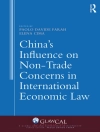The spectral realm at the boundaries of images incessantly reveals a desire to see beyond the visible and its medium: screens, frames, public displays and projection sites in an art context. The impact of new media on art and film has influenced the material histories and performances (be they in theory or practice) of images across the disciplines. Digital technologies have not only shaped post-cinematic media cultures and visual epistemologies, but they are behind a growing shift towards a new realism in theory, art, film and in the art of the moving image in particular. Technology and Desire examines the performative ontologies of moving images across the genealogies of media and their aesthetic agency in contemporary media and video art, CGI, painting, video games and installations. Drawing on cultural studies, media and film theory as well as art history to provide exemplary evidence of this shift, this book has as its central theme the question of whether images are predicated upon transgressing the boundaries of their framing – and whether in the course of their existence they develop a life of their own.
Jadual kandungan
Introduction
Post-medial Technologies of Desire: Performances of Images – Rania Gaafar and Martin Schulz
Prelude
Much Trouble in the Transportation of Souls, or the Sudden Disorganization of Boundaries – Anselm Franke
PART I: Post-Medial Image Cultures and New Media Philosophies 75
Chapter 1: Technical Repetition and Digital Art, or Why the ‘Digital’ in Digital Cinema is not the ‘Digital’ in Digital Technics – Mark B. N. Hansen
Chapter 2: Arrest and Movement – Timothy Druckrey
Chapter 3: The Aesthetics of Flow and the Aesthetics of Catharsis – Jay David Bolter
Chapter 4: Digital Images and Computer Simulations – Barbara Flueckiger
Chapter 5: Enfolding-Unfolding Aesthetics, or the Unthought at the Heart of Wood – Laura U. Marks
PART II: Fugitive Images and Transmediality
Chapter 6: Animated and Animating Landscapes: Space Voyages and Time Travel in the Art of Pieter Bruegel the Elder – Martin Schulz
Chapter 7: Copernicus and I: Revolutions in Perception and The Powers of Ten – Janet Harbord
Chapter 8: Cinema Mise en abyme: Contingencies of the Moving Image – Ursula Frohne
Chapter 9: Still Life in the Crosshairs, or For an Iconic Turn in Game Studies – Thomas Hensel
Chapter 10: Out of Image – Yvonne Spielmann
PART III: Post-Cinematic Desires: Genealogies of Anthropomorphic Transgressions
Chapter 11: Choreographing the Moving Image: Post-Cinematic Desire and the Politics of Aesthetics – Isaac Julien
Chapter 12: Desire, Time and Transition in Anthropological Film-making – Ute Holl
Chapter 13: Longing in Film: Emotions in Images – Hinderk M. Emrich
Chapter 14: The Fever Curve of the Gaze and the Body as (Image) Medium: Jacques Lacan’s Media Theory of Unconscious Desire – Annette Bitsch
PART IV: Material Specters and the Lives of Images
Chapter 15: The Sequence Image Between Motion and Stillness – Jens Schröter
Chapter 16: Gaze and Withdrawal: On the ‘Logic’ of Iconic Structures – Dieter Mersch
Chapter 17: The Magical Image in Georges Méliès’s Cinema – Lorenz Engell
Chapter 18: Liminal Spaces: Notes by Film-maker and Artist Malcolm Le Grice – Malcolm Le Grice
Chapter 19: Transgression: The Ethical Turn and the New Politics – Fatih Akin’s Cinema and the Multicultural Dilemma – Thomas Elsaesser
Chapter 20: Radicant Spaces of Enunciation: Visual Art, ‘Phenomenotechnique’, and ‘Criticality’ – Towards a Postcolonial Media(l) Theory – Rania Gaafar
Biographies of Authors












